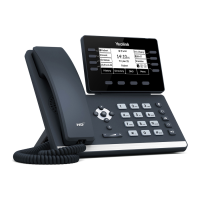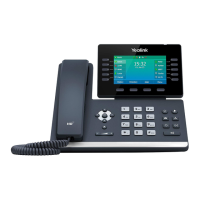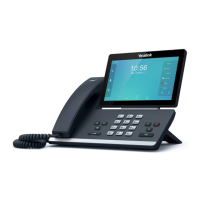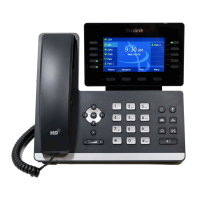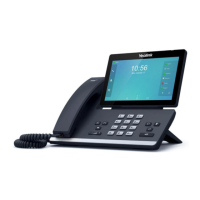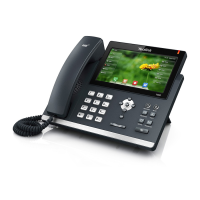Configuring Basic Features
309
files.
You can ask the distributor or Yealink FAE for dial now template. You can also obtain the dial
now template online:
http://support.yealink.com/documentFront/forwardToDocumentFrontDisplayPage. For more
information on obtaining the dial now template, refer to Obtaining Boot Files/Configuration
Files/Resource Files on page 142.
When editing a dial now template, learn the following:
<DialNow> indicates the start of a template and </DialNow> indicates the end of a
template.
When specifying the desired line(s) for the dial now rule, the valid values are 0 and line ID.
Multiple line IDs are separated by commas. It is not applicable to SIP-T19(P)
E2/CP860/CP920 IP phones.
The following table lists valid values of line ID for each phone model.
SIP-
T54S/T48G/T48S/T46G/T46
S/T29G
0 stands for all lines
1~16 stand for line1~line16
0 stands for all lines
1~12 stand for line1~line12
0 stands for all lines
1~6 stand for line1~line6
0 stands for all lines
1~3 stand for line1~line3
0 stands for all lines
1~2 stand for line1~line2
At most 100 rules can be added to the IP phone.
The expression syntax in the dial now rule template is the same as that introduced in the
section Dial Plan using XML Template Files on page 300.
To customize a dial now template:
1. Open the template file using an ASCII editor.
2. Create dial now rules between <DialNow> and </DialNow>.
For example:
<Data DialNowRule="1001" LineID="0" />
Where:
DialNowRule="" specifies the dial now rule.
LineID="" specifies the desired line(s) for this rule. When you leave it blank or enter 0, this dial
now rule will apply to all lines.

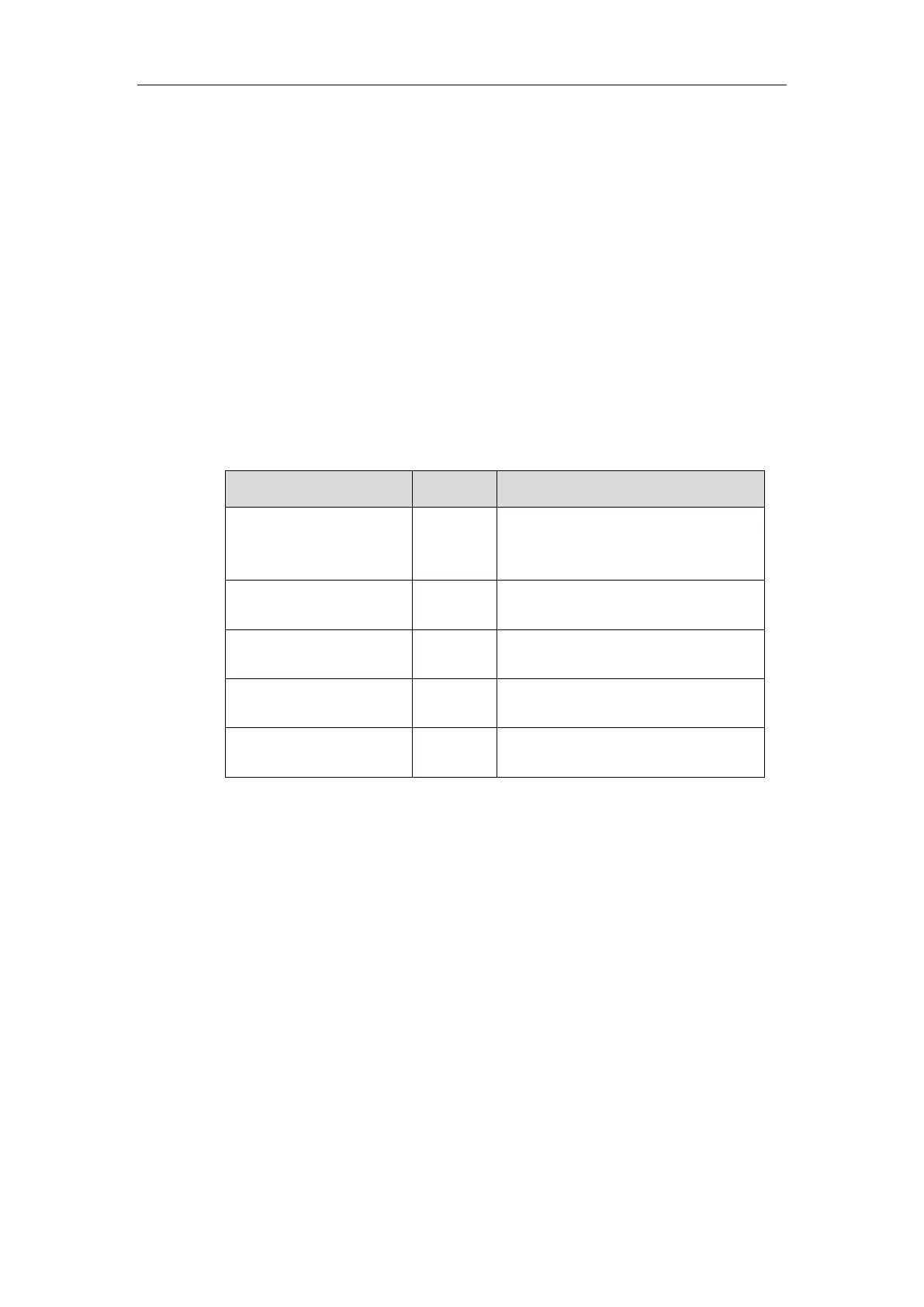